joshuapd
Member
- Joined
- Jul 14, 2015
- Messages
- 6
- Format
- 4x5 Format
Hi guys,
After a bit of work and an unfortunate mishap of pressing refresh while making the post... here's my work on using vfmoto's, another user on APUG, cable shutter tester. I have no affiliation with vfmoto, I am merely reviewing it for the sake of both the communal understanding of this tester and continued accuracy of my tests as well, I'm no expert... so please help me out if I'm wrong
I'll be outlining my steps and method, with pictures and screenshots of my actual results. Hopefully this will help me understand what's going on on the mechanical end of my equipment and enable me to photograph with my predictability.
Working Materials:
· Crown Graphic
· Symmar-S 150mm f/5.6
· Cable Tester provided by vfmoto
· Desk lamp light source
· PC w/Audacity program
Method:
1. I started off with making sure I had a proper rig according to the manual of the shutter tester. Here's what my setup looked like:



2. I made sure to have a constant light source at an adequate space away to avoid any possible error, according to the manual
3. With tester lined up behind the rear element, light towards the front element I can now start testing
Testing Procedure:
1. Set shutter to 1/xxx, xxx being the desired testing shutter
2. Prepare Audacity program to record
3. Cock and release 1/xxx shutter speed
4. Stop recording
5. Find start of curve and end according to the point of inflection (where curve changes from down to up)
6. Record results & repeat
*The decimal equivalent is found on the lower part of the audacity program middle column*
Results:
At first I was quite scared I had done the test wrong because my 1/250, 1/125, and 1/90 speeds were a bit off, thinking I did it wrong I tested multiple times and with almost identical test results, I came to the conclusion these speeds have gotten slower.
[TABLE="class: cms_table, width: 0"]
[TD="align: center"]Testing Shutter Speed[/TD]
[TD="align: center"]Recorded Shutter Speed[/TD]
[TD="align: center"]Actual Shutter Speed[/TD]
[TD="align: center"]Benchmark Shutter Speed Equivalent[/TD]
[TD="align: center"]% Error[/TD]
[TD="align: center"]1/500[/TD]
[TD="align: center"]0.004[/TD]
[TD="align: center"]1/250[/TD]
[TD="align: center"]0.0020[/TD]
[TD="align: center"]100%[/TD]
[TD="align: center"]1/250[/TD]
[TD="align: center"]0.006[/TD]
[TD="align: center"]1/175[/TD]
[TD="align: center"]0.0040[/TD]
[TD="align: center"]50%[/TD]
[TD="align: center"]1/125[/TD]
[TD="align: center"]0.011[/TD]
[TD="align: center"]1/90[/TD]
[TD="align: center"]0.0080[/TD]
[TD="align: center"]37.5%[/TD]
[TD="align: center"]1/60[/TD]
[TD="align: center"]0.018[/TD]
[TD="align: center"]1/60[/TD]
[TD="align: center"]0.0166[/TD]
[TD="align: center"]+8.4%[/TD]
[TD="align: center"]1/30[/TD]
[TD="align: center"]0.035[/TD]
[TD="align: center"]1/30[/TD]
[TD="align: center"]0.0333[/TD]
[TD="align: center"]+5.1%[/TD]
[TD="align: center"]1/15[/TD]
[TD="align: center"]0.062[/TD]
[TD="align: center"]1/15[/TD]
[TD="align: center"]0.0666[/TD]
[TD="align: center"]-6.9%[/TD]
[TD="align: center"]1/8[/TD]
[TD="align: center"]0.125[/TD]
[TD="align: center"]1/8[/TD]
[TD="align: center"]0.1250[/TD]
[TD="align: center"]0%[/TD]
[TD="align: center"]1/4[/TD]
[TD="align: center"]0.241[/TD]
[TD="align: center"]1/4[/TD]
[TD="align: center"]0.2500[/TD]
[TD="align: center"]-3.6%[/TD]
[TD="align: center"]1/2[/TD]
[TD="align: center"]0.514[/TD]
[TD="align: center"]1/2[/TD]
[TD="align: center"]0.5000[/TD]
[TD="align: center"]+2.8%[/TD]
[TD="align: center"]1[/TD]
[TD="align: center"]1.075[/TD]
[TD="align: center"]1[/TD]
[TD="align: center"]1.0000[/TD]
[TD="align: center"]+7.5%[/TD]
[/TABLE]
In the table above, the left two columns are my recorded results of the tested shutter speed. The third column values are taken from the values listed in the manual as shutter equivalents in decimal form. You can also get these equivalents using a calculator and making an equation of the shutter speed, i.e. 1 / 500 = 0.0020 (Obvious, but adding in just for clarity). Last, is the margin of error; error can be seen as good or bad depending on how much it deviates from the actual speed it was set.
In the case of 500, 250, and 125, the margin of error deviates far enough to decrease the speed from 1 stop and less. Thats where the initial happy/sad moment came. With multiple tests, the near-consistent decimal results led me to believe these speeds have lost their luster.
The weird parts of the graph where the graph reads a whole bunch of changes could be a result of the light source or some unaccounted aberration, but because it was consistent I decided to make it negligent to my test results. With more than 30% of change in speed from speed 125 and up, Ill be sure to make some changes to my shooting technique.
Below Ive also included screenshots of each of my highlighted work areas of the specific shutters. The only thing Im concerned with what Ive done is that my working test results dont match the shutter good shutter spikes included within the manual. Im not sure why, but from what Ive understood these can be considered equal, I have no way to completely verify the results other than the help from the community to improve my tests.
Total Tests:

Test area for 1/500: 0.004

Test area for 1/250: 0.006

Test area for 1/125: 0.011

Test area for 1/60: 0.018

Test area for 1/30: 0.035

Test area for 1/15: 0.062

Test area for 1/8: 0.125

Test area for 1/4: 0.241

Test area for 1/2: 0.514

Test area for 1": 1.075

Conclusion:
From what Ive gathered, the test results have proven to be accurate and consistent with multiple instances and would say the tester works great. With shutter speeds in the faster end degrading more than the slower speeds, it does make sense that they would be slower, but seeing the degree of change makes me just a bit more happier that I can confirm it's slower haha. Ideally the control would be my digital camera since Ive just everything serviced for them so it should be in good order with a very small margin of error, but I have to test myself to make sure. I really enjoy doing the tests because it helps me better prepare for a proper exposure that I would have envisioned at the time of the photo.
I hope this helps others out in some small way, but please if there is anything wrong with my testing kindly point it out
After a bit of work and an unfortunate mishap of pressing refresh while making the post... here's my work on using vfmoto's, another user on APUG, cable shutter tester. I have no affiliation with vfmoto, I am merely reviewing it for the sake of both the communal understanding of this tester and continued accuracy of my tests as well, I'm no expert... so please help me out if I'm wrong

I'll be outlining my steps and method, with pictures and screenshots of my actual results. Hopefully this will help me understand what's going on on the mechanical end of my equipment and enable me to photograph with my predictability.
Working Materials:
· Crown Graphic
· Symmar-S 150mm f/5.6
· Cable Tester provided by vfmoto
· Desk lamp light source
· PC w/Audacity program
Method:
1. I started off with making sure I had a proper rig according to the manual of the shutter tester. Here's what my setup looked like:
2. I made sure to have a constant light source at an adequate space away to avoid any possible error, according to the manual
3. With tester lined up behind the rear element, light towards the front element I can now start testing
Testing Procedure:
1. Set shutter to 1/xxx, xxx being the desired testing shutter
2. Prepare Audacity program to record
3. Cock and release 1/xxx shutter speed
4. Stop recording
5. Find start of curve and end according to the point of inflection (where curve changes from down to up)
6. Record results & repeat
*The decimal equivalent is found on the lower part of the audacity program middle column*
Results:
At first I was quite scared I had done the test wrong because my 1/250, 1/125, and 1/90 speeds were a bit off, thinking I did it wrong I tested multiple times and with almost identical test results, I came to the conclusion these speeds have gotten slower.
[TD="align: center"]Testing Shutter Speed[/TD]
[TD="align: center"]Recorded Shutter Speed[/TD]
[TD="align: center"]Actual Shutter Speed[/TD]
[TD="align: center"]Benchmark Shutter Speed Equivalent[/TD]
[TD="align: center"]% Error[/TD]
[TD="align: center"]1/500[/TD]
[TD="align: center"]0.004[/TD]
[TD="align: center"]1/250[/TD]
[TD="align: center"]0.0020[/TD]
[TD="align: center"]100%[/TD]
[TD="align: center"]1/250[/TD]
[TD="align: center"]0.006[/TD]
[TD="align: center"]1/175[/TD]
[TD="align: center"]0.0040[/TD]
[TD="align: center"]50%[/TD]
[TD="align: center"]1/125[/TD]
[TD="align: center"]0.011[/TD]
[TD="align: center"]1/90[/TD]
[TD="align: center"]0.0080[/TD]
[TD="align: center"]37.5%[/TD]
[TD="align: center"]1/60[/TD]
[TD="align: center"]0.018[/TD]
[TD="align: center"]1/60[/TD]
[TD="align: center"]0.0166[/TD]
[TD="align: center"]+8.4%[/TD]
[TD="align: center"]1/30[/TD]
[TD="align: center"]0.035[/TD]
[TD="align: center"]1/30[/TD]
[TD="align: center"]0.0333[/TD]
[TD="align: center"]+5.1%[/TD]
[TD="align: center"]1/15[/TD]
[TD="align: center"]0.062[/TD]
[TD="align: center"]1/15[/TD]
[TD="align: center"]0.0666[/TD]
[TD="align: center"]-6.9%[/TD]
[TD="align: center"]1/8[/TD]
[TD="align: center"]0.125[/TD]
[TD="align: center"]1/8[/TD]
[TD="align: center"]0.1250[/TD]
[TD="align: center"]0%[/TD]
[TD="align: center"]1/4[/TD]
[TD="align: center"]0.241[/TD]
[TD="align: center"]1/4[/TD]
[TD="align: center"]0.2500[/TD]
[TD="align: center"]-3.6%[/TD]
[TD="align: center"]1/2[/TD]
[TD="align: center"]0.514[/TD]
[TD="align: center"]1/2[/TD]
[TD="align: center"]0.5000[/TD]
[TD="align: center"]+2.8%[/TD]
[TD="align: center"]1[/TD]
[TD="align: center"]1.075[/TD]
[TD="align: center"]1[/TD]
[TD="align: center"]1.0000[/TD]
[TD="align: center"]+7.5%[/TD]
[/TABLE]
In the table above, the left two columns are my recorded results of the tested shutter speed. The third column values are taken from the values listed in the manual as shutter equivalents in decimal form. You can also get these equivalents using a calculator and making an equation of the shutter speed, i.e. 1 / 500 = 0.0020 (Obvious, but adding in just for clarity). Last, is the margin of error; error can be seen as good or bad depending on how much it deviates from the actual speed it was set.
In the case of 500, 250, and 125, the margin of error deviates far enough to decrease the speed from 1 stop and less. Thats where the initial happy/sad moment came. With multiple tests, the near-consistent decimal results led me to believe these speeds have lost their luster.
The weird parts of the graph where the graph reads a whole bunch of changes could be a result of the light source or some unaccounted aberration, but because it was consistent I decided to make it negligent to my test results. With more than 30% of change in speed from speed 125 and up, Ill be sure to make some changes to my shooting technique.
Below Ive also included screenshots of each of my highlighted work areas of the specific shutters. The only thing Im concerned with what Ive done is that my working test results dont match the shutter good shutter spikes included within the manual. Im not sure why, but from what Ive understood these can be considered equal, I have no way to completely verify the results other than the help from the community to improve my tests.
Total Tests:
Test area for 1/500: 0.004
Test area for 1/250: 0.006
Test area for 1/125: 0.011
Test area for 1/60: 0.018
Test area for 1/30: 0.035
Test area for 1/15: 0.062
Test area for 1/8: 0.125
Test area for 1/4: 0.241
Test area for 1/2: 0.514
Test area for 1": 1.075
Conclusion:
From what Ive gathered, the test results have proven to be accurate and consistent with multiple instances and would say the tester works great. With shutter speeds in the faster end degrading more than the slower speeds, it does make sense that they would be slower, but seeing the degree of change makes me just a bit more happier that I can confirm it's slower haha. Ideally the control would be my digital camera since Ive just everything serviced for them so it should be in good order with a very small margin of error, but I have to test myself to make sure. I really enjoy doing the tests because it helps me better prepare for a proper exposure that I would have envisioned at the time of the photo.
I hope this helps others out in some small way, but please if there is anything wrong with my testing kindly point it out

Attachments
-
 setup-1.jpg138 KB · Views: 339
setup-1.jpg138 KB · Views: 339 -
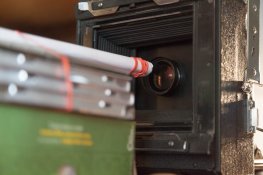 setup-2.jpg134.7 KB · Views: 332
setup-2.jpg134.7 KB · Views: 332 -
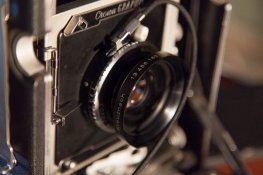 setup-3.jpg130.4 KB · Views: 316
setup-3.jpg130.4 KB · Views: 316 -
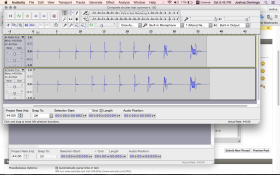 Total Test work.png214 KB · Views: 330
Total Test work.png214 KB · Views: 330 -
 500th work area.png113 KB · Views: 359
500th work area.png113 KB · Views: 359 -
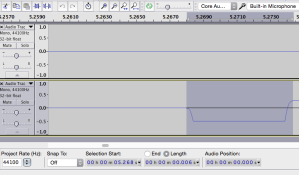 250th work area.png61.2 KB · Views: 476
250th work area.png61.2 KB · Views: 476 -
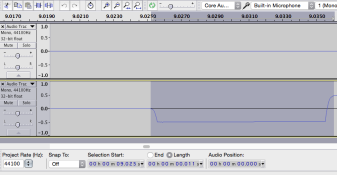 125th work area.png62.8 KB · Views: 512
125th work area.png62.8 KB · Views: 512 -
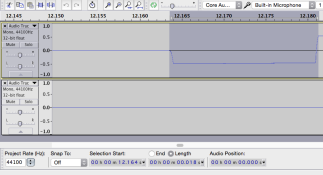 60th work area.png61.7 KB · Views: 313
60th work area.png61.7 KB · Views: 313 -
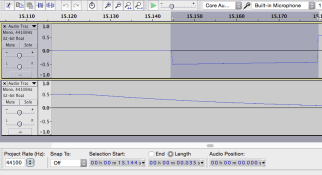 30th work area.png61 KB · Views: 319
30th work area.png61 KB · Views: 319 -
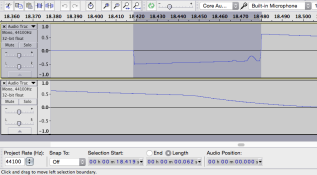 15th work area.png67.4 KB · Views: 320
15th work area.png67.4 KB · Views: 320 -
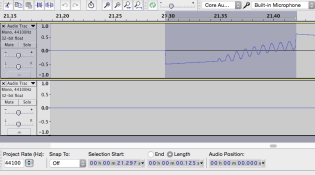 8th work area.png61.2 KB · Views: 322
8th work area.png61.2 KB · Views: 322 -
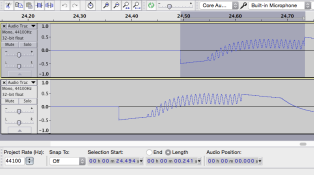 4th work area.png65.7 KB · Views: 318
4th work area.png65.7 KB · Views: 318 -
 half work area.png77.4 KB · Views: 331
half work area.png77.4 KB · Views: 331 -
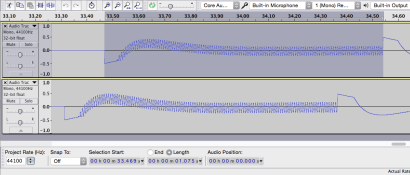 second work area.png82.7 KB · Views: 329
second work area.png82.7 KB · Views: 329



